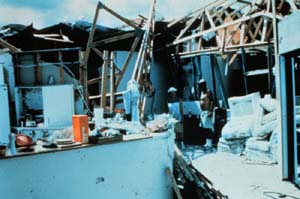


For more on waves, seismicity and earthquakes, you can check out some of the following web-sites to learn more:
United States Geological Survey: (A great resource for LOTS of inter-related topics, with an entire section on earthquakes. There is even a section to Ask-A-Geologist where you can email a question and get a response from a real geologist!)
Michigan Technological University (A great site with activities galore about earthquakes and seismic waves.)
Virtual Earthquake (Earthquake simulation)
Alaska Science Forum (A great paper about how "hearing" an earthquake before it hits: the speed of sound versus the speed of seismic waves.)
Nevada Seismological Laboratory (seismic waves and how they are deformed - great visuals)